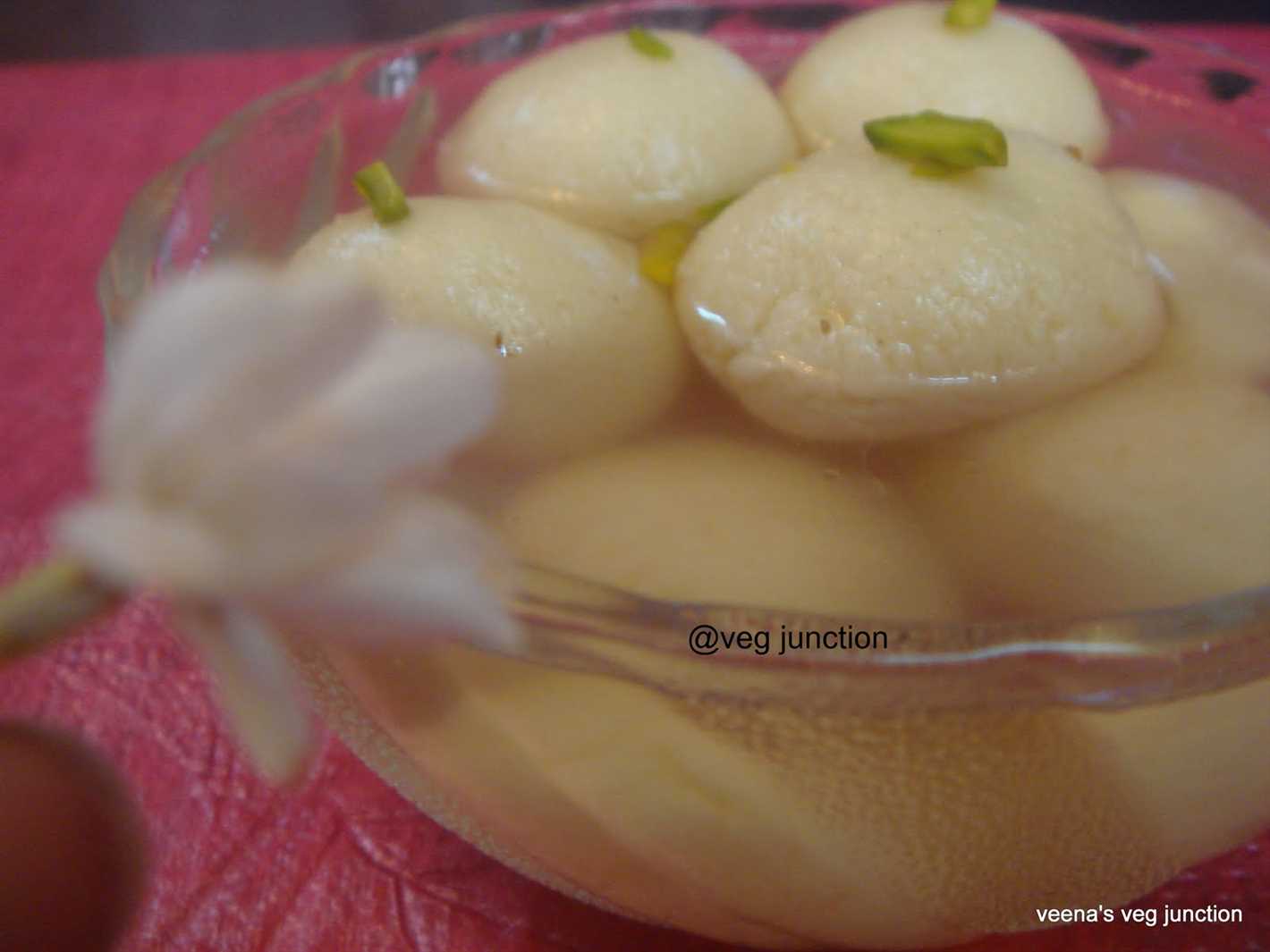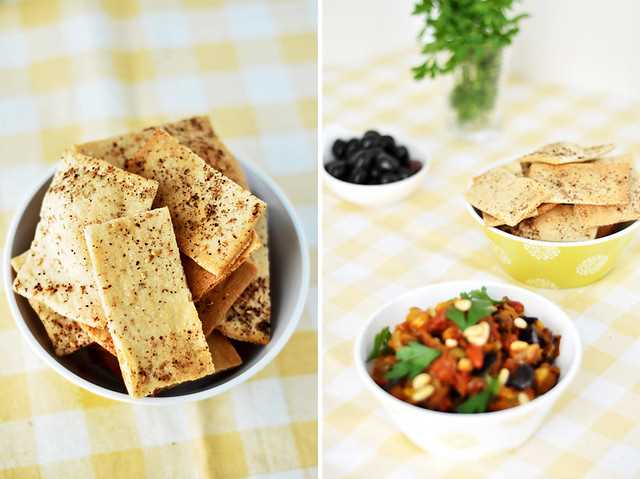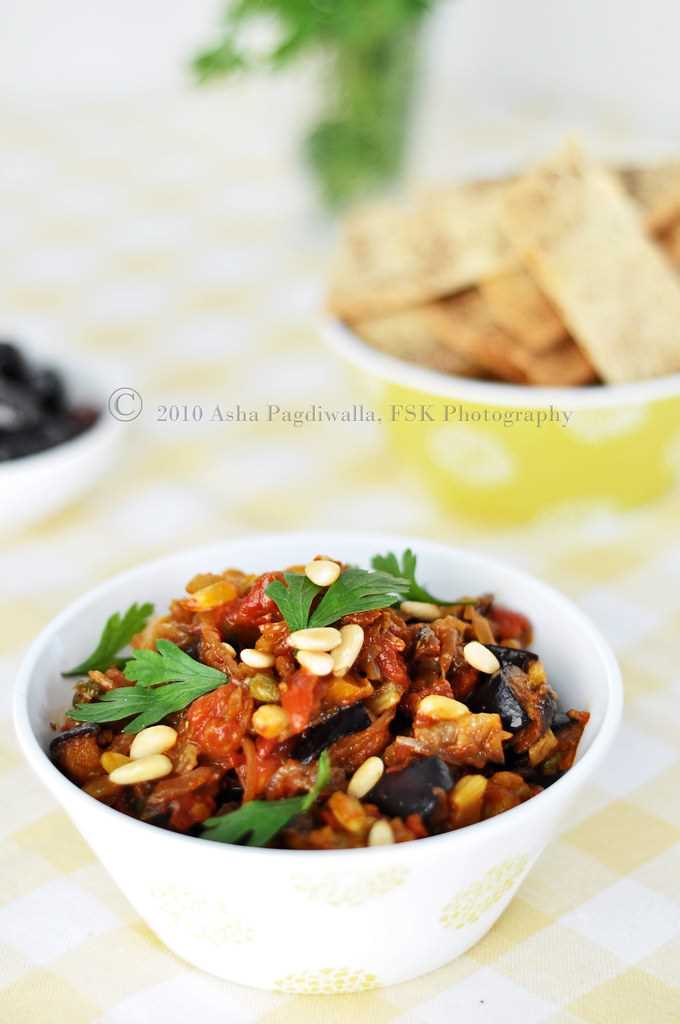- Harvesting Velvetrees: The Optimal Timing
- Factors to Consider
- Signs of Readiness
- Recommended Harvesting Time
- Conclusion
- Factors to Consider for Velvetrees Harvest
- 1. Maturity of the Velvetrees
- 2. Weather Conditions
- 3. Time of Day
- 4. Visual Appearance
- 5. Size of the Velvetrees
- 6. Pest and Disease Control
- 7. Harvesting Equipment
- 8. Post-Harvest Handling
- Preparing Velvetrees for Harvest
- 1. Choosing the Right Time
- 2. Inspecting the Velvetrees
- 3. Tools and Equipment
- 4. Harvesting Methods
- 5. Storing the Harvested Velvetrees
- 6. Using Harvested Velvetrees
- Delicious Dishes Perfect for Velvetrees
- 1. Creamy Velvetress Soup
- 2. Velvetree Risotto
- 3. Velvetree and Goat Cheese Tart
- 4. Velvetree and Truffle Pasta
- 5. Roasted Velvetrees with Herbed Butter
- 6. Velvetree and Brie Crostini
- 7. Velvetree and Wild Rice Salad
- 8. Velvetree and Gruyère Quiche
- 9. Velvetree and Spinach Stuffed Chicken Breast
- 10. Velvetree and Eggplant Parmesan
- Incorporating Velvetrees in Salads
- 1. Velvetree and Goat Cheese Salad
- 2. Grilled Vegetable and Velvetree Salad
- 3. Citrus and Velvetree Salad
- 4. Asian-Inspired Velvetree Salad
- 5. Quinoa and Velvetree Salad
- Velvetrees in Main Courses: Recipes and Ideas
- Braised Velvetrees with Garlic and Soy Sauce
- Velvetree and Chicken Stir-Fry
- Velvetree Salad
- Decadent Desserts with Velvetrees
- 1. Velvetrees Cheesecake
- 2. Velvetrees Chocolate Truffles
- 3. Velvetrees Bread Pudding
- Velvetrees as an Ingredient in Beverages
- Why Use Velvetrees in Beverages
- Flavor Profile
- Popular Velvetree Beverages
- How to Prepare Velvetree-Infused Beverages
- Conclusion
- Questions and Answers:
- What are velvetrees?
- When is the best time to harvest velvetrees?
- How should velvetrees be prepared before cooking?
- What are some ideal dishes to serve with velvetrees?
- Can velvetrees be frozen for later use?
- Videos: How Mediterranean Meal Prep will Transform Your Week
Velvetrees, also known as the “velvet revolution of the culinary world,” are a unique and highly prized ingredient in many cuisines. Harvesting velvetrees at the perfect time is crucial to ensure the best flavor and texture. In this article, we will explore the best time to harvest velvetrees and some ideal dishes to serve using this extraordinary ingredient.
Velvetrees are typically harvested in the late summer or early fall, depending on the specific variety and growing conditions. It is important to wait until the velvetrees are fully matured before harvesting, as this is when they are at their peak flavor and nutritional value. One can identify a ripe velvetree by its deep purple color and soft, velvety texture. Picking velvetrees too early can result in a bland and underdeveloped taste.
Once the velvetrees are harvested, the possibilities for incorporating them into dishes are endless. Their unique flavor profile, a combination of earthy and nutty notes, pairs well with both sweet and savory dishes. One popular way to enjoy velvetrees is by roasting them with olive oil, garlic, and a sprinkle of sea salt. The roasting process brings out their natural sweetness and tenderizes their texture, resulting in a dish that is both delicious and visually stunning.
Another delightful way to serve velvetrees is in a salad. The unique texture and flavor of velvetrees make them a perfect addition to a mixed green salad or a grain salad. A simple dressing made with lemon juice, olive oil, and a touch of honey complements the velvetrees’ earthy taste and adds a refreshing element to the dish. Top the salad with some toasted nuts or crumbled cheese to enhance its taste even further.
In conclusion, the best time to harvest velvetrees is when they are fully matured, with a deep purple color and a soft, velvety texture. The intense and unique flavor of velvetrees makes them a versatile ingredient that can be used in a wide range of dishes. Whether roasted or served in a salad, velvetrees are sure to elevate any meal and leave a lasting impression on your taste buds.
Harvesting Velvetrees: The Optimal Timing
Velvetrees are a type of plant known for their unique texture and flavor. Harvesting these trees at the right time is crucial to ensure the best taste and quality. But when exactly is the optimal time to harvest velvetrees?
Factors to Consider
Before determining the best time to harvest velvetrees, several factors should be taken into account:
- Growth Stage: Velvetrees go through different growth stages, from bud formation to fully matured. It’s important to wait until the trees have reached their mature stage before harvesting.
- Color and Texture: The color and texture of the leaves play a significant role in determining the readiness for harvest. Velvetrees should have a rich, dark green color and a velvety texture.
- Weather Conditions: The weather can also affect the optimal harvesting time. Velvetrees thrive in mild climates with adequate sunlight and moisture.
Signs of Readiness
Here are some signs that indicate velvetrees are ready to be harvested:
- Leaf Appearance: The leaves should be fully developed and have a deep green color.
- Texture: Gently touch the leaves to check for the soft, velvety texture that characterizes velvetrees.
- Bud Formation: The buds should be well-formed and plump.
Recommended Harvesting Time
Based on the factors mentioned above, the optimal time to harvest velvetrees is typically during the late summer or early fall. This is when the trees have fully matured and developed their characteristic flavor and texture.
Keep in mind that it’s essential to harvest velvetrees before the first frost of the season, as cold weather can damage the delicate leaves and affect the taste.
Conclusion

Harvesting velvetrees at the optimal time ensures the best flavor and quality. By considering the growth stage, color and texture, weather conditions, and signs of readiness, you can enjoy the unique taste and texture of velvetrees in your dishes.
Factors to Consider for Velvetrees Harvest
When it comes to harvesting velvetrees, there are several factors that need to be considered. These factors can have a significant impact on the quality and taste of the velvetrees, so it’s important to pay attention to them.
1. Maturity of the Velvetrees
The maturity of the velvetrees is an important factor to consider when deciding the best time to harvest. Velvetrees should be harvested when they are fully matured but before they start to overripe. Overripe velvetrees can become tough and lose their flavor.
2. Weather Conditions
The weather conditions can also play a role in determining the best time to harvest velvetrees. Ideal weather conditions include moderate temperature and dry weather. Harvesting during rainy or humid weather can lead to the growth of mold and spoilage of the velvetrees.
3. Time of Day

The time of day when velvetrees are harvested can affect their taste and quality. Harvesting in the early morning or late evening when the temperature is cooler can help preserve the freshness and flavor of the velvetrees.
4. Visual Appearance

Visual appearance is another important factor to consider when harvesting velvetrees. Velvetrees should have a vibrant green color and a firm texture. Avoid harvesting velvetrees that have wilted or discolored leaves as they may indicate poor quality.
5. Size of the Velvetrees
The size of the velvetrees can also influence the ideal time for harvest. Velvetrees should be harvested when they have reached a desirable size. Harvesting too early can result in underdeveloped velvetrees, while harvesting too late can result in oversized velvetrees that may be tough and less flavorful.
6. Pest and Disease Control
Pest and disease control is crucial for maintaining the quality and health of the velvetrees. Regular inspection and treatment for pests and diseases should be carried out to ensure that the velvetrees are free from any infestations or infections.
7. Harvesting Equipment
The type of harvesting equipment used can also impact the quality of the velvetrees. Using sharp and clean cutting tools can ensure that the velvetrees are harvested without any damage or contamination.
8. Post-Harvest Handling
Proper post-harvest handling is essential to maintain the freshness and quality of the velvetrees. This includes cleaning, sorting, and storing the velvetrees in a cool and dry place to prevent spoilage.
By considering these factors, you can ensure that you harvest velvetrees at the optimal time, resulting in delicious and high-quality dishes to serve.
Preparing Velvetrees for Harvest
1. Choosing the Right Time
Harvesting velvetrees at the right time is crucial for their taste and quality. The best time to harvest velvetrees is typically during their peak season, which is usually in the late summer or early fall. At this time, the velvetrees are mature and their flavors are the most developed.
2. Inspecting the Velvetrees
Before harvest, it’s important to inspect the velvetrees to ensure they are ready to be picked. Look for vibrant and fully grown velvetrees with no signs of damage or disease. The velvetrees should have a rich green color and firm texture. Avoid velvetrees that are yellow, wilted, or have any blemishes.
3. Tools and Equipment
When preparing to harvest velvetrees, gather the necessary tools and equipment. These may include a sharp knife or pruning shears for cutting the velvetrees, a clean bin or bucket for collecting them, and gloves to protect your hands from any prickly thorns that some velvetrees may have.
4. Harvesting Methods
Harvesting velvetrees can be done using different methods depending on personal preference and the size of the velvetrees. One method is to cut the entire velvetree stem above the ground level. This can be done for smaller velvetrees or when you want to use the entire stem for cooking.
Another method is to selectively harvest the velvetrees, by cutting only the outermost velvetrees, leaving the inner ones to continue growing. This method allows the inner velvetrees to develop further and can result in multiple harvests throughout the season.
5. Storing the Harvested Velvetrees
After harvesting the velvetrees, it’s important to store them properly to maintain their freshness. Remove any excess leaves or thorns, and gently wash the velvetrees under cool running water. Pat them dry with a clean towel and store them in a perforated plastic bag or airtight container in the refrigerator.
6. Using Harvested Velvetrees
Harvested velvetrees can be used in a variety of dishes, both raw and cooked. They can be used as a base for salads, added to stir-fries, soups, or stews, or even grilled for a delicious side dish. The delicate and slightly bitter flavor of velvetrees enhances the taste of many dishes and can be enjoyed in both hot and cold preparations.
By following these steps, you can ensure that your harvested velvetrees are of the highest quality and ready to be used in your favorite recipes.
Delicious Dishes Perfect for Velvetrees
1. Creamy Velvetress Soup
The creamy velvetress soup is a classic dish that highlights the earthy flavors of these mushrooms. Made with fresh velvetrees, onions, garlic, and vegetable broth, this soup is rich, velvety, and packed with flavor. It can be served as an appetizer or a light main course.
2. Velvetree Risotto

A velvety and indulgent risotto is the perfect way to showcase the unique taste and texture of velvetrees. This dish combines creamy Arborio rice, sautéed velvetrees, onions, garlic, and Parmesan cheese. The result is a rich and comforting meal that is perfect for a chilly evening.
3. Velvetree and Goat Cheese Tart
This savory tart combines the earthy flavors of velvetrees with tangy goat cheese, caramelized onions, and a buttery pastry crust. It makes for an elegant and flavorful appetizer or a light lunch when served with a side salad.
4. Velvetree and Truffle Pasta
For a decadent and luxurious dish, try making velvetree and truffle pasta. Sautéed velvetrees are tossed with al dente pasta, truffle oil, garlic, and Parmesan cheese. The result is a dish that is rich, earthy, and full of umami flavors.
5. Roasted Velvetrees with Herbed Butter
Roasting velvetrees with herbed butter is a simple yet delicious way to enjoy these mushrooms. The velvety texture and earthy flavors are enhanced by the aromatic herbs and rich butter. Serve them as a side dish or incorporate them into a salad or pasta.
6. Velvetree and Brie Crostini
For an elegant appetizer, make velvetree and Brie crostini. Sautéed velvetrees are spread on toasted baguette slices, topped with melted Brie cheese, and garnished with fresh thyme. The combination of the earthy mushrooms, creamy cheese, and crunchy bread is a delightful treat.
7. Velvetree and Wild Rice Salad
A refreshing and hearty salad that combines cooked wild rice, sautéed velvetrees, dried cranberries, toasted pecans, and a tangy vinaigrette dressing. This salad is a great option for a light lunch or a side dish for a dinner party.
8. Velvetree and Gruyère Quiche
This savory tart combines the flavors of velvetrees and Gruyère cheese in a fluffy and decadent quiche. The buttery crust, creamy filling, and earthy mushrooms make for a delightful brunch or dinner dish.
9. Velvetree and Spinach Stuffed Chicken Breast
This elegant main course combines sautéed velvetrees, fresh spinach, and creamy goat cheese stuffed inside a tender chicken breast. The flavors meld together beautifully, and the dish can be served with roasted potatoes or a fresh salad.
10. Velvetree and Eggplant Parmesan
A vegetarian twist on the classic Italian dish, velvetree and eggplant Parmesan combines breaded and fried eggplant slices with sautéed velvetrees, marinara sauce, mozzarella cheese, and Parmesan cheese. The result is a delicious and hearty meal that everyone will love.
Incorporating Velvetrees in Salads
If you’re looking to add a unique and flavorful ingredient to your salads, look no further than velvetrees. These tender leaves have a delicate yet slightly bitter taste, making them a perfect addition to a variety of salad recipes. Here are some ideas on how to incorporate velvetrees into your next salad:
1. Velvetree and Goat Cheese Salad
A simple and delicious salad that combines the earthy flavors of velvetrees with the creamy tang of goat cheese. Start by washing and drying the velvetree leaves, then toss them with some fresh herbs like mint or basil. Top with crumbled goat cheese and a drizzle of balsamic vinaigrette for a refreshing and satisfying salad.
2. Grilled Vegetable and Velvetree Salad
Take your salad to the next level by grilling some vegetables and mixing them with velvetrees. Start by slicing and grilling vegetables like zucchini, peppers, and eggplant. Once they’re nicely charred, let them cool and then combine them with the velvetree leaves. Add some crumbled feta cheese and a sprinkle of toasted pine nuts for an extra crunch.
3. Citrus and Velvetree Salad
A bright and citrusy salad that pairs perfectly with velvetrees. Start by segmenting some oranges or grapefruits and set aside the juice. In a separate bowl, mix together the velvetree leaves with some thinly sliced red onion and chopped mint. Drizzle the citrus segments and the reserved juice over the salad, and finish with a sprinkle of salt and pepper.
4. Asian-Inspired Velvetree Salad

If you’re a fan of Asian flavors, try creating a salad with velvetrees, sesame dressing, and crunchy toppings. Start by washing and drying the velvetree leaves, then mix them with some thinly sliced cucumber, shredded carrots, and chopped scallions. Toss the salad with a sesame dressing and top with some crushed peanuts and toasted sesame seeds for added crunch.
5. Quinoa and Velvetree Salad
For a hearty and nutritious salad, combine cooked quinoa with velvetree leaves and a variety of vegetables. Start by cooking the quinoa according to package instructions and letting it cool. Then, mix it with the velvetree leaves and add in diced tomatoes, cucumbers, and avocado. Drizzle with a lemon tahini dressing and garnish with fresh herbs like parsley or cilantro.
These are just a few ideas to get you started on incorporating velvetrees into your salads. Feel free to experiment with different ingredients and flavors to create your own unique salad recipes. Whether you’re looking for a light side dish or a satisfying meal, velvetrees add a touch of elegance and flavor to any salad.
Velvetrees in Main Courses: Recipes and Ideas
Braised Velvetrees with Garlic and Soy Sauce
Ingredients:
- 2 cups of harvested velvetrees
- 4 cloves of garlic, minced
- 3 tablespoons of soy sauce
- 1 tablespoon of vegetable oil
- Salt and pepper to taste
Instructions:
- Heat the vegetable oil in a pan over medium heat.
- Add the minced garlic and sauté until fragrant.
- Add the harvested velvetrees and cook for 2-3 minutes.
- Pour in the soy sauce and season with salt and pepper.
- Cover the pan and simmer for about 5 minutes, or until the velvetrees are tender.
- Serve hot as a side dish or over rice.
Velvetree and Chicken Stir-Fry
Ingredients:
- 2 cups of harvested velvetrees
- 1 cup of cooked chicken, sliced
- 1 bell pepper, sliced
- 1 onion, sliced
- 3 tablespoons of soy sauce
- 2 tablespoons of oyster sauce
- 1 tablespoon of vegetable oil
- 1 clove of garlic, minced
- Salt and pepper to taste
Instructions:
- Heat the vegetable oil in a pan or wok over high heat.
- Add the minced garlic and sauté for a few seconds.
- Add the sliced onion and bell pepper, and stir-fry for 2-3 minutes.
- Add the sliced chicken and cook until heated through.
- Add the harvested velvetrees and stir-fry for another 2 minutes.
- Pour in the soy sauce and oyster sauce, and season with salt and pepper.
- Cook for an additional 2 minutes, or until the velvetrees are tender.
- Serve hot with steamed rice.
Velvetree Salad
Ingredients:
- 2 cups of harvested velvetrees
- 1 tomato, diced
- 1 cucumber, sliced
- 1 red onion, thinly sliced
- 1/4 cup of feta cheese, crumbled
- 2 tablespoons of olive oil
- 1 tablespoon of lemon juice
- Salt and pepper to taste
Instructions:
- In a large bowl, combine the harvested velvetrees, tomato, cucumber, and red onion.
- In a small bowl, whisk together the olive oil, lemon juice, salt, and pepper.
- Pour the dressing over the salad and toss to combine.
- Sprinkle the crumbled feta cheese on top.
- Serve chilled as a refreshing salad.
| Nutrient | Amount per 1 cup (94g) |
|---|---|
| Calories | 32 |
| Carbohydrates | 7g |
| Fiber | 1g |
| Protein | 2g |
| Fat | 0g |
| Vitamin A | 57% |
| Vitamin C | 14% |
| Calcium | 9% |
| Iron | 3% |
Decadent Desserts with Velvetrees
1. Velvetrees Cheesecake
Combining the rich flavor of Velvetrees with the creamy goodness of cheesecake creates a dessert that is truly indulgent. To make Velvetrees cheesecake, you will need the following ingredients:
- 1 1/2 cups crushed graham crackers
- 1/4 cup melted butter
- 3 packages (8 ounces each) cream cheese, softened
- 1 cup granulated sugar
- 1 teaspoon vanilla extract
- 3 eggs
- 1 cup Velvetrees puree
Instructions:
- Preheat the oven to 325°F (163°C). Grease a 9-inch (23 cm) springform pan.
- In a bowl, combine the crushed graham crackers and melted butter. Press the mixture into the bottom of the prepared pan to form the crust.
- In a separate bowl, beat the cream cheese, sugar, and vanilla extract until smooth. Add the eggs, one at a time, beating well after each addition.
- Stir in the Velvetrees puree until well combined. Pour the mixture over the crust in the pan.
- Bake for 45-50 minutes, or until the center is set. Allow the cheesecake to cool in the pan before refrigerating for at least 4 hours or overnight.
- Serve chilled and enjoy the velvety goodness of Velvetrees cheesecake.
2. Velvetrees Chocolate Truffles

For a bite-sized treat that is both luxurious and delectable, try making Velvetrees chocolate truffles. Here’s what you’ll need:
- 8 ounces semisweet chocolate, chopped
- 1/2 cup heavy cream
- 1/4 cup Velvetrees puree
- 1/2 cup cocoa powder, for rolling
Instructions:
- Place the chopped chocolate in a heatproof bowl.
- In a saucepan, heat the heavy cream until it just starts to simmer. Pour the hot cream over the chocolate and let it sit for a minute.
- Stir the chocolate and cream mixture until smooth and well combined. Add the Velvetrees puree and mix again.
- Cover the bowl and refrigerate for at least 2 hours, until the mixture is firm enough to scoop.
- Using a teaspoon or a melon baller, scoop out portions of the mixture and roll them into small balls.
- Roll each truffle in cocoa powder until coated, then place them on a baking sheet lined with parchment paper.
- Refrigerate the truffles for another hour to set. Serve chilled and savor the velvety goodness.
3. Velvetrees Bread Pudding
Transform ordinary bread into a luscious dessert with the addition of Velvetrees. Here’s what you’ll need:
- 8 cups cubed day-old bread
- 4 cups milk
- 1 cup Velvetrees puree
- 1 cup granulated sugar
- 4 large eggs
- 1 teaspoon vanilla extract
- 1/2 teaspoon ground cinnamon
- 1/4 teaspoon ground nutmeg
- 1/2 cup raisins (optional)
Instructions:
- Preheat the oven to 350°F (175°C). Grease a 9×13-inch (23×33 cm) baking dish.
- In a large bowl, combine the cubed bread, milk, Velvetrees puree, sugar, eggs, vanilla extract, cinnamon, nutmeg, and raisins (if desired). Mix well to ensure all the bread is soaked in the mixture.
- Pour the bread mixture into the greased baking dish, spreading it out evenly.
- Bake for 45-50 minutes, or until the top is golden and the pudding is set.
- Let the pudding cool for a few minutes before serving. Enjoy the velvety and comforting flavors of Velvetrees bread pudding.
These decadent desserts with Velvetrees are sure to satisfy any sweet tooth. From creamy cheesecake to rich truffles and comforting bread pudding, each dish showcases the unique flavors and smooth texture of Velvetrees. Try one or all of these recipes for a truly indulgent dessert experience.
Velvetrees as an Ingredient in Beverages
Why Use Velvetrees in Beverages
Velvetrees, also known as Rhus lancea, are not only popular for their culinary uses but also for being a versatile ingredient in beverages. These unique trees offer a range of flavors that can add depth and complexity to various drinks. Whether you are looking to create refreshing cocktails, soothing teas, or lively infusions, velvetrees can be an excellent choice to enhance your beverages.
Flavor Profile
The leaves and berries of velvetrees have a distinctive sweet and tangy flavor, often described as a combination of citrus and berries. This flavor profile can bring a unique taste to your beverages and make them more interesting to drink.
Popular Velvetree Beverages
Here are some popular beverages that incorporate velvetree as an ingredient:
- Venomous Velvetree Cocktail
- Velvetree Infused Water
- Velvetree Berry Tea
This cocktail combines the tangy flavor of velvetrees with a mix of spirits for a delightful and refreshing drink. The venomous velvetree cocktail is perfect for those who enjoy a balance of sweet and tart flavors.
Infusing water with velvetree leaves and berries can add a subtle flavor to your drink while providing some health benefits. Velvetree infused water is a great option for those looking for a refreshing and hydrating drink with a hint of sweetness.
Using dried velvetree berries, you can create a flavorful tea that is rich in antioxidants. Velvetree berry tea is a soothing and healthy beverage option, perfect for enjoying on a cozy evening.
How to Prepare Velvetree-Infused Beverages
To prepare velvetree-infused beverages, follow these steps:
- Gather fresh velvetree leaves or berries.
- Thoroughly wash the leaves or berries to remove any dirt or impurities.
- Crush the leaves or berries slightly to release their flavor.
- Add the crushed velvetree leaves or berries to your beverage of choice.
- Let the ingredients infuse for a desired amount of time, usually between 10-20 minutes.
- Strain the infused beverage to remove any solids.
- Serve the velvetree-infused beverage chilled or hot, depending on your preference.
Conclusion
Velvetrees offer a unique and distinctive flavor profile that can elevate your beverages. From cocktails to teas, these versatile trees can bring a refreshing twist to your drinks. Next time you are looking to experiment with new flavors, consider using velvetree as an ingredient in your beverages.
Questions and Answers:
What are velvetrees?
Velvetrees are a type of edible mushroom that is highly prized for its rich flavor and texture.
When is the best time to harvest velvetrees?
The best time to harvest velvetrees is during the late summer and early autumn, when they are fully mature and have reached their peak flavor.
How should velvetrees be prepared before cooking?
Before cooking, velvetrees should be carefully cleaned and trimmed. It is recommended to gently brush off any dirt or debris and cut off the tough stems, leaving only the tender caps.
What are some ideal dishes to serve with velvetrees?
Velvetrees can be used in a variety of dishes, both as a main ingredient or as a flavorful addition. Some ideal dishes to serve with velvetrees include creamy mushroom soups, pasta dishes, stir-fries, and risottos.
Can velvetrees be frozen for later use?
Yes, velvetrees can be frozen for later use. To do so, it is best to blanch them briefly in boiling water, then cool them down quickly in an ice bath before placing them in airtight containers or freezer bags. Frozen velvetrees can be stored for up to several months.







